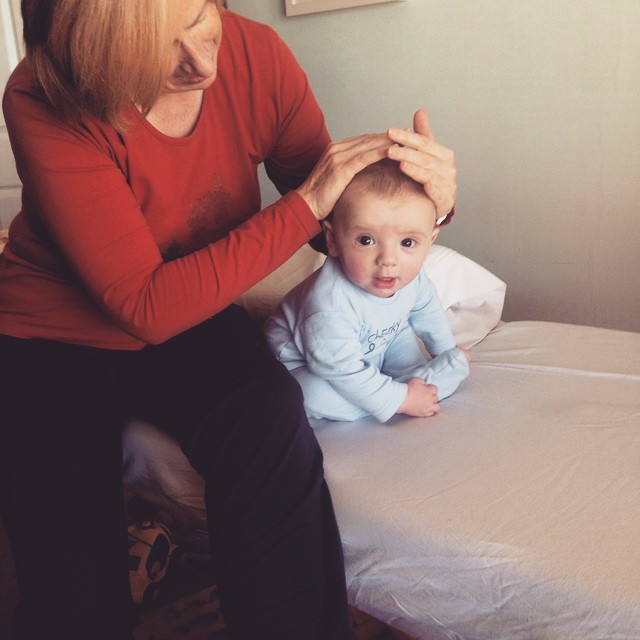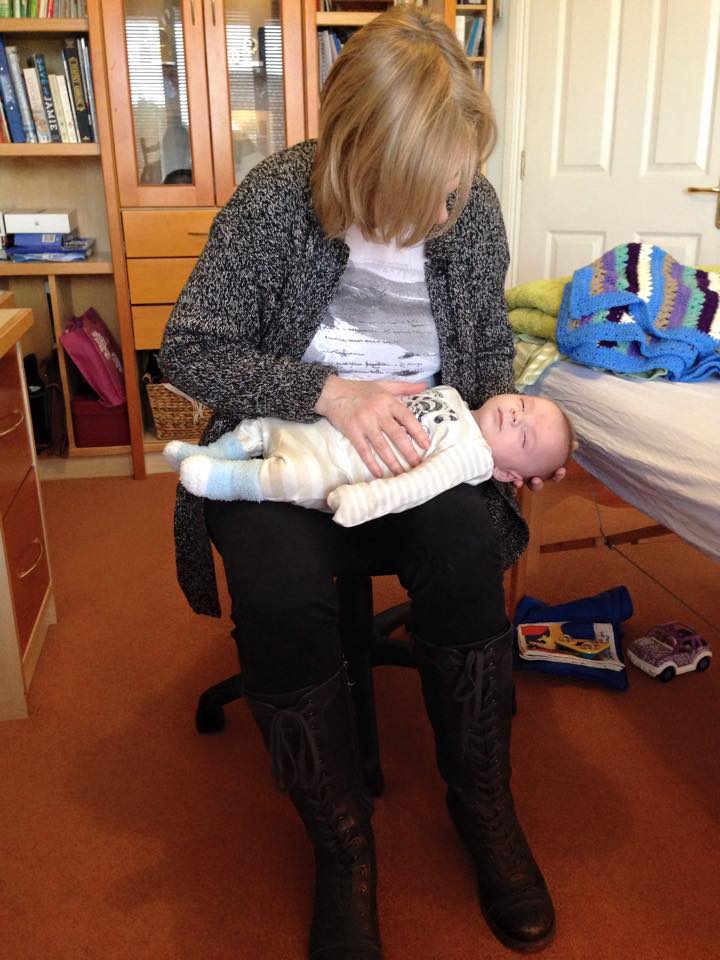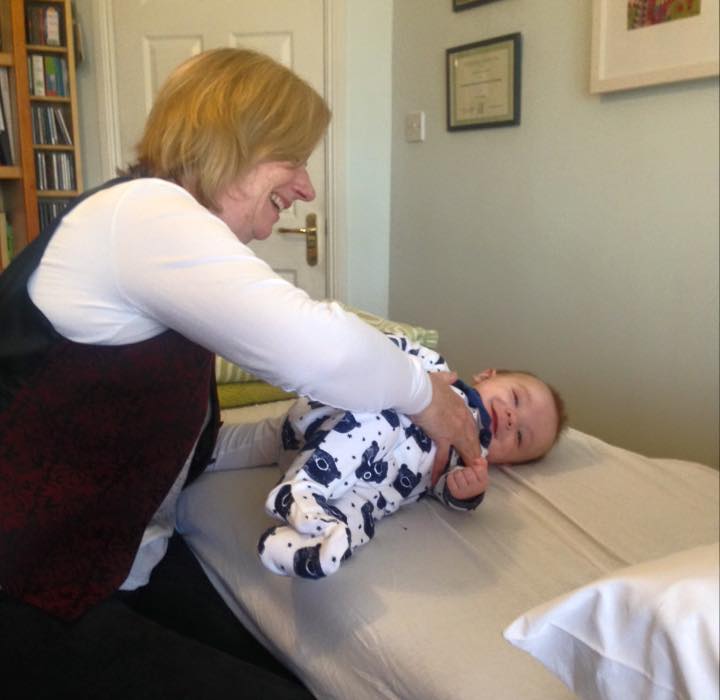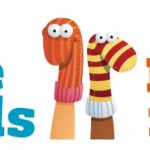A while ago I posted on facebook wanting to know if Cranial massage worked for babies. Luke was 4 weeks old, screaming day and night. He would fight sleep, he was tongue tied and found it difficult feeding. He had silent reflux, heart burn, terrible mucus problems, bronchitis and to top it off, the doctors are sure he is lactose intolerant but he refused to drink the soy based milk prescribed to him. I was desperate for sleep, I didn’t have any energy for Leila and then the guilt kicked in. I needed to do something.
I found out we were not the only family exhausted and living in a bubble. Many mothers emailed me saying we were all in the same boat and that they wanted to know if cranial massage worked also.
I was given the details of Marie McGinnity who heard the stress in my voice over a phone call and as I had a c-section she kindly called to the house. We went through details of the birth and what problems myself and Luke had. I lay on the couch and Marie started to work on me. She barely touched me but I could feel my body, I was no longer numb, I felt warmth and started to relax and I was present. Many people asked what did she do? Did it work? My answer, I have no idea but it works. For the next week I was calm & relaxed my husband noticed the difference instantly. I was able to cope!
Luke was next, I was a little nervous that I wasn’t in control ( I’m a control freak). Luke was very unsettled at this stage. She placed her hands under his back and one on top of his tummy. Instantly I noticed Luke was starting to relax and let go. The next minute he was asleep. She continued to “work” on him for another 30minutes. I couldn’t believe it, the weeks of screaming, not sleeping and a women I never met before was able to get my baby to calm down, sleep and feed. That night Luke had the best sleep. It worked but it’s not an instant fix. I booked with Marie once a week to start off and the gradually every two weeks. Luke is 14 weeks and now we see Marie every 4 weeks. Luke is a different baby, he no longer screams, we still have a few moments, he has put on weight and feeds well.
Below are a few questions Marie answered to explain what CST involves
What is Craniosacral therapy and who benefits?
Craniosacral Therapy’s gentle approach is very safe and can be used for all ages, from the newborn to the elderly, and is also safe throughout pregnancy.
Craniosacral Therapy is a gentle hands on treatment method that focuses on alleviating restriction to physiological motion of all bones of the skull, including face, mouth as well as vertebral column, sacrum, coccyx and pelvis. The Craniosacral therapist also focuses on normalising abnormal tensions and stresses in the meningeal membrane, with special attention to its outermost membrane, the dura mater and its fascial connections. Attention is paid to alleviating any obstacles to free movement by cerebrospinal fluid with its membrane compartment and to normalising and balancing perceived related energy fields.
How soon should my baby see a craniosacral therapist?.
CST is safe to use on newborns and so your baby will benefit from a treatment in the first weeks or days they are born.
Does CST work ?
CST is very gentle and babies respond well to treatment. Parents may notice their baby go quite still for a brief period, or yawn. At times the baby may cry briefly as they let go of restrictions in their body.
Is it painful?
CST uses a very gentle light touch and so is not painful.
What do you actually do when you put your hands on?
When I place my hands on the baby I am “listening” to the Craniosacral rhythm, (this is the flow of the Cerebrospinal fluid round the brain and through the spinal cord). Babies generally respond by moving or adjusting their bodies to gain a sense of ease and to release any tension in their body.
Is treatment recommended and beneficial to the mother?
Absolutely YES. Mums are so preoccupied with caring for their newborn that they often forget the most important rule. Caring for yourself is of vital importance to your baby – without your own health and well being it becomes very difficult to be the Mum you want to be.
What can CranioSacral Therapy Do for babies and children?
We are all familiar with the cardiovascular and respiratory systems within the human body, similarly the craniosacralsystem influences the internal environment that surrounds the brain and spinal cord. With this area being the basic core of the body, CranioSacral Therapy can have a positive effect on any dysfunction and/or imbalance in the body: improving brain and spinal cord functions, dissipating negative effects of stress and injury, enhancing general health, aiding resistance to disease, improving physical, mental and emotional expression.
One of craniosacral therapy’s most appreciated qualities is its capacity to rapidly resolve problems babies have and can be safely used on newborn and premature babies; these include:
•Colic
•sucking difficulties
•sleep problems
•behavioural issues.
These are often due to the compression the baby undergoes during birth. Parents are frequently relieved and amazed by the seemingly miraculous improvements resulting from craniosacral sessions.
As a result of the contractions and passage through the pelvis and the birth canal, babies get very compressed during birth and this can displace things in their bodies. The relatively soft bones of the head move during birth but don’t always return to an optimal position, leading to a variety of difficult conditions which, however, respond easily to craniosacral treatment.
Caesarean births and those involving forceps or suction are more likely to lead to symptoms. These are often immediately obvious but sometimes don’t develop until later on. Craniosacral therapy can be beneficial to all babies including those from problem-free births even when there are no apparent symptoms.
Physical and Behavioral Indicators for CST
•Most asymmetries in face/head and body, coning that doesn’t resolve within one week, wry neck
•Difficulty latching, sucking and swallowing, pulls away from breast, objects to being on stomach
•Super needy – cling-ons, communicating “I hurt”, aggression
•Hypersensitive, crying that won’t stop, difficult to calm
•Ear inflammations, Temporal Mandibular Dysfunction, thrush, constipation, and tonsillitis
•Hypo activity and seizures, delayed response
•Difficulty breathing/Cardiac irregularities
•Projectile vomiting/Hyperactive peristalsis
•Thumb sucking, head bumping
•Hyperactivity, developmental delays, sensory integration, poor coordination and balance, speech, vision problems and listening skills
•Excessive & constant drooling not related to teething.
How does CST work?
In response to physical knocks or emotional stress, the body’s tissues contract and particularly when the shock is severe or occurs within an emotional situation, the tissues stay contracted. Any stresses, strains, tensions or traumas which have been “stored” in the body in this way will restrict the body’s ability to function and may give rise to problems over the years. The effects may both be physical (such as back pain, migraine or digestive) and emotional (such as stress, anxiety or depression).
The gentle techniques used in CST provide an opportunity for the body to let go of its restrictive pattern and return to an easier mode of functioning. As well as releasing the body’s tension it frees the energy that the body was previously using to hold itself in contraction.
I highly recommend Marie and I’m very thankful for all her help. If you have any questions, Please contact Marie at mariemc3@gmail.com
Please LIKE her on facebook http://www.facebook.com/CraniosacralCare



 I challenge you.
I challenge you. Summer Scheme Little hands Little feet
Summer Scheme Little hands Little feet Bassetts Official Clady Opening
Bassetts Official Clady Opening Roe Park Resort and Spa
Roe Park Resort and Spa